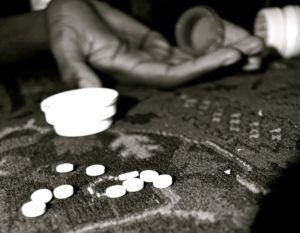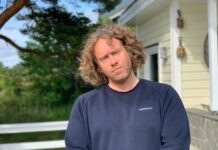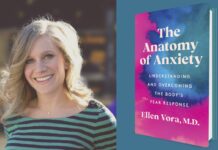US news coverage has primarily framed the opioid drug abuse epidemic as a criminal justice issue rather than a public health problem, according to new research published ahead of print in the Journal of Psychiatric Services. The media’s framing of the epidemic may increase stigma against those who develop a dependency on prescription drugs and distract political attention from public-health oriented solutions, such as increased access to substance abuse recovery treatments.
“The most frequently mentioned cause of the problem was illegal drug dealing, and the most frequently mentioned solutions were law enforcement solutions designed to arrest and prosecute the individuals responsible for diverting opioid analgesics onto the illegal market,” the researchers from the John Hopkins School of Public Health wrote.
 In the late 1990s, in response to the heightened awareness of untreated pain issues and with the development of new extended-release opioids, doctors in the US began prescribing these drugs with increasing frequency. In the two decades following this rise in prescriptions the rates of opioid abuse, addiction and overdose have increased exponentially. According to the authors, “overdose deaths involving opioid analgesics have quadrupled since 1999 and now total about 16,000 a year, more than deaths caused by heroin and cocaine combined.”
In the late 1990s, in response to the heightened awareness of untreated pain issues and with the development of new extended-release opioids, doctors in the US began prescribing these drugs with increasing frequency. In the two decades following this rise in prescriptions the rates of opioid abuse, addiction and overdose have increased exponentially. According to the authors, “overdose deaths involving opioid analgesics have quadrupled since 1999 and now total about 16,000 a year, more than deaths caused by heroin and cocaine combined.”
To examine public discourse around the opioid epidemic, researchers led by Dr. Emma McGinty analyzed the content of mainstream news coverage of the issue between 1999 and 2012. McGinty and her colleagues suggest that “the news media can influence which issues audiences deem important and in need of response,” and that “media coverage can influence public and policy makers’ attitudes in important ways.”
“By highlighting certain aspects of issues, the news media can influence how the public and policy makers perceive the causes of and appropriate responses to a given issue.”
After examining 673 television and newspaper stories, the researchers found that the majority (57%) of stories mentioning a cause of the epidemic pointed to illegal drug dealers as the likely culprit and, as a result, efforts to arrest and prosecute drug dealers were suggested as solutions most frequently (64%).
“Although experts agree that pharmaceutical companies’ failure to disclose the risks of opioid analgesics has contributed significantly to the current epidemic of abuse, only 8% of news stories mentioned this as a cause.”
Shockingly, less than 1% of news stories suggested increasing access to substance abuse centers and only 3% recommended harm reduction policies. When individual users were depicted in news stories, they were most often (66%) presented as criminals.
“In addition to highlighting illegal drug dealing as the principal cause of opioid analgesic abuse, our study found that the news media focused on law enforcement solutions targeting illicit drug dealing as opposed to upstream approaches designed to prevent abuse and deter diversion of legitimate pain medications to the illegal market or evidence-based addiction treatment and harm reduction approaches.”
*
McGinty, E. E., Kennedy-Hendricks, A., Baller, J., Niederdeppe, J., Gollust, S., & Barry, C. L. Criminal Activity or Treatable Health Condition? News Media Framing of Opioid Analgesic Abuse in the United States, 1998–2012. Psychiatric Services, 0(0), appi.ps.201500065. doi:doi:10.1176/appi.ps.201500065 (Abstract)















This really is a shame, especially given the mainstream medical community’s completely irresponsible behavior in recent years. My case is an example of the societal problem of patients who are inappropriately, unnecessarily, and unknowingly prescribed opioids by the mainstream medical community.
I had a “bad fix” on a broken bone, and was given a “safe pain killer” – what I learned years later, through my own research, was a synthetic opioid. I was not informed it was an opioid drug by any of my doctors. It was not called opium either, it was called Ultram. It was also given in conjunction with a “safe smoking cessation med” / dangerous, also mind altering, antidepressant that had a major drug interaction warning with the opioid.
My doctor swore up and down, and left and right, that there was no way in the world the resulting common symptoms of antidepressant discontinuation syndrome and odd thoughts and dreams from either or both drugs could ever possibly have been caused by the drugs.
Thankfully, I did not take the “safe pain med” often, so did not become an inadvertent opioid addict. But a misdiagnosis of the adverse effects of these drugs were the etiology of what was later claimed to be “bipolar.” And all of the doctors and psychiatrists I spoke with claimed that the Ultram and antidepressant could never in a million years cause mind altering effects.
I’m quite certain it should be made illegal for doctors to prescribe opioids, and other mind altering drugs, while claiming these drugs are safe and calling them by other names. No doubt today’s mainstream medical community is likely largely responsible for today’s opium epidemic. Thus it is appalling and wrong to treat the victims of egregiously bad medical care as addicts and criminals, when in reality it is the doctors and their properly taken prescriptions that are the third leading cause of death in our society today.
Report comment
Seems like the authors of this article are speaking out on some of the issues the media ignores, but participating in the White-Coat Wall of Silence with regard to others. They decry the focus on busting drug dealers and other police measures. They urge more access to drug treatment as well as “harm reduction” (i.e., needle exchanges, etc.) that will prevent addicts from dying, even if they can’t or won’t quit yet. All well and good.
They also want the news to focus on “prevention.” But what’s their key “prevention” measure, according to the abstract? Prescription drug monitoring programs. Dr. Andrew Kolodny has dubbed this approach “The Emperor’s New Paradigm.” It’s the medical establishment’s way to look like they are dealing with the crisis, while continuing to obscure the real issue. (Kolodny is head of PROP, a group of doctors and activists crusading for a real end to the epidemic.)
Most Prescription Drug Monitoring Programs continue to pretend we’re dealing with two separate groups of patients with different needs. There’s “abusers” who deliberately take more than Doctor prescribed, or lie about their symptoms to get the drug, and may sell some of their stash to other “abusers.” Then there are “legitimate patients” who take their drugs for real pain, exactly as the doctor ordered, and should continue to do so for as long as Doctor thinks best. Monitoring programs aim to root out phony patients, “doctor shoppers” (those going from doc to doc trying to get more drugs) and patients whose prior history of drug and alcohol use or mental illness put them at high risk for becoming “abusers.”
Supposedly “abusers” can become addicted, but “legitimate patients” who follow doctors’ instructions cannot. That’s the Big Lie. A big percentage of patients who first get these drugs from their doctors to treat an illness or injury, and take them as prescribed, will become addicted. And no, we have no reliable way to spot “potential addicts” in advance. What we can do is prevent tragedies by concentrating on the main cause of the epidemic: DOCTORS whose prescribing practices are creating new addicts, and DRUG COS who taught them to prescribe that way.
Sad to say, the authors of this article seem mainly interested in pushing the “Emperor’s New Paradigm.” It’s just the newer, more sophisticated version of the Big Lie that gave birth to this epidemic in the first place. Any doctor who wants to be part of the solution must first admit that doctors are the biggest part of the problem.
Report comment
I beg to differ with Andrew Kolodny. He has unexposed bias. PROP is owned by Phoenix House is just a start.
“Four out of five recent heroin initiates (79.5 percent) previously used NMPR whereas only 1.0 percent of recent NMPR initiates had prior use of heroin. However, the vast majority of NMPR users have not progressed to heroin use. Only 3.6 percent of NMPR initiates had initiated heroin use within the 5-year period following first NMPR use.”
http://www.samhsa.gov/data/sites/default/files/DR006/DR006/nonmedical-pain-reliever-use-2013.htm
In other words, even among NMPR (non-medical pain reliever use – which would include using a Vicodin from the medicine cabinet that was not prescribed to you for pain from a pained ankle. Honestly, should policy makers and the media be conflating that manner of NMPR use with abuse, addiction, and overdose deaths? But I digress . . ) . . . even among NMPR users, only 3.6 % go on to initiate heroin use. SAMSHA does not provide data on medical pain reliever users (MPR), but I think it would be safe to assume that abuse, addiction, overdose, and progression to heroin use would be less prevalent among that population than among NMPR users.
EVEN heroin users are largely non-problematic! See Dr. Carl Hart for more information on that assertion.
http://www.drcarlhart.com/vast-majority-people-use-heroin-dont-need-treatment/
Report comment
Checking it out http://www.drcarlhart.com/drug-myths-exposed/
Cool website , I would also like to add that most people who do drugs don’t hurt anyone, there are no victims until the day they get caught and give the state an excuse to steal tens of thousands of dollars from the tax payers by putting them in jail and running them through that system we all get stuck paying for.
And last I checked their are no coca bushes or opium poppies growing in America but they seem to like attacking the end users, American citizens, instead of putting that effort into stopping it from coming in from other places.
Report comment
Johanna
Excellent critical analysis.
Another related issue is the medical establishment and the pharmaceutical industry’s promotion of the view that “chronic pain” is actually a “disease.” Judy Forman who is a medical writer for the Boston Globe just posted such an analysis last week. It is this phony science that justifies long term prescription of opioid drugs for those patients who are not “abusing” or selling their drugs. More and more evidence is coming out that long term use of opioid drugs can make pain symptoms worse in the long run.
Report comment
Richard, the same thing goes on with addiction. Hearing ignorant old men bemoan “this disease of addiction” and brainstorm how to “fight this disease” was one of the reasons I stopped going to 12 step groups. They would overtly talk about themselves as if they “had an illness” that was making them do the addictive behavior. It just got so ridiculous and pathetic to hear it every week. Now when I think about it can make me laugh out loud because it’s so dumb to think of addiction and mental/behavioral problems as internal diseases.
Report comment
Amen! I have seen too many clients at my job who have real pain from real back injuries. When they start these drugs they’re in mild to moderate pain, most of the time, and able to do only light work. A year or so later they are in moderate to severe pain, constantly, and can’t work at all. Almost nobody gets their life back — mostly it’s the opposite.
As for Judy Foreman — I do know she’s been in the media actively trying to smear PROP and other groups who challenge the status quo. She wrote a book called A Nation In Pain, promoting the idea that “100 million Americans are in chronic pain.” It’s a bizarre figure that has a lot in common with the estimate of “one in four Americans living with a mental illness.” Both are outlandish; both lump together the mildest and most serious problems, and both are promoted to market drugs.
Report comment
References to published peer-reviewed evidence of your assertion that long term use of opioid peptides can make pain symptoms worse? Just because you, or Andrew Kolodny, say it does not make it true. I want EVIDENCE!
As for Judy Foreman promoting the 100 million figure . . . that is not her number, it is a number published by the Institute of Medicine. If you have a problem with the National Academies, I would suggest you take it up with them directly rather than casting aspersions on the integrity of Judy Foreman and the Boston Globe. Admittedly, that 100 million figure covers a large range of chronic pain conditions – from a “bum knee” in an 85 year old to the severe, unremitting pain of Richard Paey who was imprisoned in FL until his case was publicized by 60 Minutes in a Morley Safer interview.
Again, I want real references to bona fide evidence, not endlessly repeated talking points from self-proclaimed “experts” like Andrew Kolodny.
http://iom.nationalacademies.org/reports/2011/relieving-pain-in-america-a-blueprint-for-transforming-prevention-care-education-research.aspx
http://www.cbsnews.com/news/prisoner-of-pain/
https://www.law.umich.edu/special/exoneration/Pages/casedetail.aspx?caseid=3802
Report comment
Dear R. Brown — I think I would start you out with this position paper adopted last year by the American Academy of Neurology: Opioids for chronic noncancer pain.
https://www.aan.com/uploadedFiles/Website_Library_Assets/Documents/6.Public_Policy/1.Stay_Informed/2.Position_Statements/3.PDFs_of_all_Position_Statements/Position%20and%20Policy%20Documents.pdf
It may not be the last word, but it cites 40 other published peer-reviewed papers on which it is based. If you wish to do the research, this gives you a trail a mile wide.
As for the “100 million chronic pain sufferers”: I think you have answered your own question, and in exactly the same way I tried to. The problem with this figure is that it “lumps together the mildest and most serious problems”: people in chronic severe pain which causes major suffering and functional impairment, and Persons in Late Middle Age like myself whose right hip or left knee acts up from time to time.
The real harm is done when the largest possible estimate of persons affected is thrown into a blender with the worst possible symptoms that can result — and then used to paint a false picture of 100 million people in life-altering agony. This is where I object to Judy Foreman’s attacks on anyone who questions the Opioid Status Quo.
It’s the same as taking the largest possible estimate of people who suffer from SOME type of psychiatric symptom at SOME point, and combining this with the worst possible symptoms that can occur (intense suicidal feelings, terrifying hallucinations, what have you). You end up with a distorted picture which is used to argue that millions more people need to be “properly diagnosed” and put on psychiatric meds.
Report comment
The war on drugs…
All the psychos working in those court buildings get to make a fortune and live upscale lifestyles wile all the sadists working in the jails and probation get a steady stream of new victims.
They don’t care if its not right the prison industrial complex is fun and profit to them. “Just doing my job” is what the NAZIs said.
Below is a link to a good paper.
A ‘Holocaust in Slow Motion?’ America’s Mass Incarceration and the Role of Discretion http://papers.ssrn.com/sol3/papers.cfm?abstract_id=2489640
Report comment
How it works:
First they coerce a Plea bargain.
Then they write “drug offender” on your record so you cant get a good job.
Then they extort money and trash your life with court fees and probation till you say screw it and get high like most people do during that nightmare.
Then they send you to jail “criminal school” to make themselves a few more bucks and for job security.
Then they extort money and trash your life with court fees and probation till you say screw it and get high like most people do during that nightmare…
The drug war explained.
Report comment
Can’t go “Hahahaha” here. Some people are getting a bum deal. However, there have to be some issues with the government prosecuting people for dealing in the same drugs the government is dealing in, that is, opioids, pain-killers, and speed.
Report comment
“government prosecuting”
I got “lucky” that alcohol was my drug of choice, it sucks for people that get caught up in opiates and get screwed over by the “justice” system for doing exactly what I was doing but with a different substance.
An alcoholic is sick bit an opiate addict is a criminal, it makes no sense.
I don’t like this article, if people want to do drugs let them.
Report comment
How for-profit prisons have become the biggest lobby no one is talking about
Sen. Marco Rubio is one of the biggest beneficiaries.
https://www.washingtonpost.com/posteverything/wp/2015/04/28/how-for-profit-prisons-have-become-the-biggest-lobby-no-one-is-talking-about/
I just found that searching Opiate Addiction Prison Industrial Complex on Goggle.
Marco Rubio, you suck.
Report comment